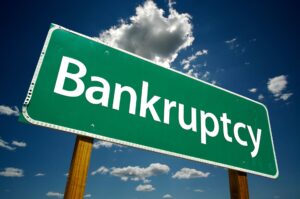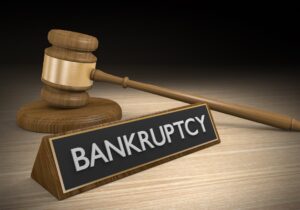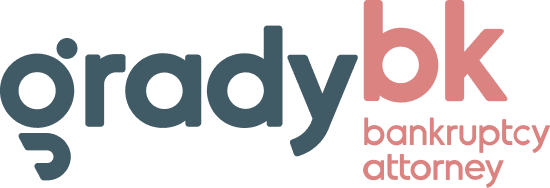If you’re looking for bankruptcy advice, you’ve probably found yourself in a place where debt is constantly on your mind. You may have already calculated your current and projected income and seen no way to crawl out from under your pile of debt. Maybe you’ve found that most of your monthly income is spent on debt, so paying it all back seems impossible.
It’s not impossible. More Americans than before are living with high amounts of debt, and they’re finding that a Chapter 13 bankruptcy repayment plan is the answer they’ve been looking for. Chapter 13 is a type of bankruptcy used by people with a regular monthly income who have become overwhelmed by mounting debt. It’s often called the “wage earner’s plan” because it’s used by people who can eventually pay back all or most of their debts but who need some help to get there.
This article will explain Chapter 13 Bankruptcy, and offer insights into maintaining your financial stability throughout the process. We’ll walk you through what happens when you file for bankruptcy in New York and provide practical advice on how to get out of debt.
If you’re considering filing for Chapter 13 bankruptcy, call Grady BK, PLLC, today. We offer a highly experienced and compassionate approach to bankruptcy that you won’t find anywhere else.
What Does Chapter 13 Bankruptcy Offer?
Deciding whether Chapter 13 bankruptcy is the right choice depends on your specific financial situation and goals. Chapter 13 bankruptcy has unique features and benefits compared to other forms of bankruptcy, but it also has drawbacks.
It allows you to keep your property and pay back debts under a court-approved repayment plan that typically lasts three to five years. Filing can immediately stop foreclosure proceedings, and you will be able to repay missed mortgage, car, or property tax payments over time. It applies a protection measure for any co-signers of your consumer debts, so they’re not affected by your bankruptcy decision.
The repayment plan can be made to fit your current financial situation, and it can be changed if your circumstances change. Once your payment plan is complete, most of your remaining debts will be discharged, and you’ll be free to start over financially without those debts weighing you down.
What Are the Downsides to Chapter 13 Bankruptcy?
When you complete a Chapter 13 bankruptcy, debts will no longer weigh you down. However, your credit score will take a hit. That’s the tradeoff that bankruptcy offers: your debts are repaid or eliminated, but you’ll need to spend a few years getting your credit score back to where it belongs.
This is usually the biggest worry my clients have before beginning the bankruptcy process, but it’s never as devastating as they fear. After filing bankruptcy, you will start to rebuild your credit within a few months. We will provide you with information on how to start this rebuilding process. Before the end of the Chapter 13 bankruptcy you will have rebuilt your credit.
Another drawback of Chapter 13 is the commitment it requires (3 to 5 years of repayment). You’ll need to stay on your repayment plan until it’s complete. Failing to follow the guidelines of Chapter 13 may result in your bankruptcy being dismissed. If that happens, you are no longer protected from your creditors, and they will be able to restart collection activity against you. Also, certain debts like student loans, alimony, and child support are not dischargeable (not wiped away) under Chapter 13.
Is Chapter 13 Bankruptcy Right for You?
Chapter 13 requires a steady income that can meet your monthly expenses and still allow you to make payments under the repayment plan. If your income isn’t high enough to cover both, Chapter 7 bankruptcy might work better for your situation. There are also limits on how much debt you can have and still qualify for Chapter 13.
How Do I File for Chapter 13 Bankruptcy?
- Speak to a Bankruptcy Attorney: The first step in filing Chapter 13 bankruptcy is to speak with an expert about your financial situation. You’ll want to make sure that Chapter 13 is your best option and that all other forms of debt management have been explored.
- Complete a Credit Counseling Course: Before you can file for any bankruptcy, you must complete a credit counseling program from an approved agency 180 days before filing. This course is designed to help you understand the process, evaluate your financial situation, and explore the alternatives to bankruptcy.
- File the Petition for Bankruptcy: To start your Chapter 13 bankruptcy, your attorney will file a petition with the bankruptcy court that serves your county in New York. Along with the petition, you’ll submit detailed lists of your current assets and liabilities, your current income and expenditures, your executory contracts and unexpired leases, and finally, a statement of financial affairs.
- Submit Your Repayment Plan: This plan will outline how you intend to pay off your debts and how long it will take you. Your first payment under the repayment plan will start 30 days after the bankruptcy is filed. Plans are usually set between 3-5 years, but the length of your plan will depend on your income and the amount of debt you owe.
Call Grady BK, PLLC, for Bankruptcy Help Today
At Grady BK, PLLC, we understand the choice to file bankruptcy isn’t just a financial decision; it’s an emotional one. That’s why we work hard to provide clients with not just experienced guidance but also compassion.




